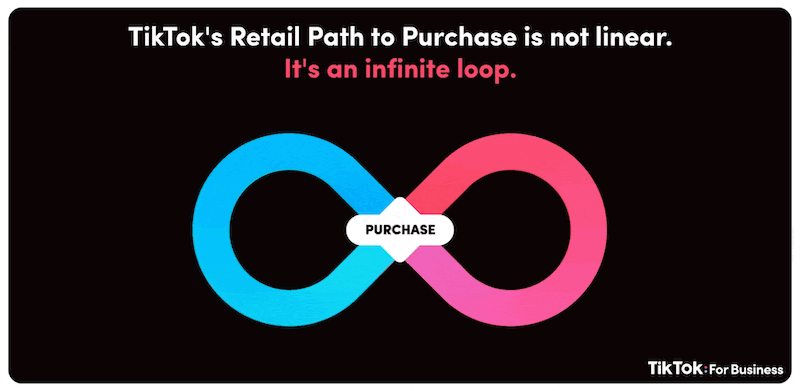Why people buy stuff on social media
TIKTOK'S FRESH TAKE ON THE PATH TO PURCHASE
The path to purchase is one of those universal laws that marketers and advertisers take for granted. It's how we make decisions, how we plan our media, and I even wrote a whole issue of The Brief last week about how the Super Bowl ads were targeted to the various phases of that funnel.
And then TikTok released a study that appears to turn the idea on its head (or side).
The study analyzed thousands of social media users to figure out when they interacted with branded social media content and how that impacted their purchase behaviours. Here's a summary of what they found
In short, TikTok is positively impacting people's behaviour in at least three of the phases. But what's the big deal?
The folks at TikTok have come to the conclusion that the traditional marketing funnel has been broken – that instead of people moving linearly from Awareness through Consideration to Purchase, people on TikTok are bumping into brands at every step of the journey.
Of course they are.
The digital marketing industry has been saying this for about a decade, and those who focus on retail experiences have been telling us that people don't exist within a strict set of steps for much longer than that. But that's kind of the point.
No thoughtful marketer has ever believed that there are distinct cohorts of people who move in lock-step through the funnel. The tool exists so we can look at our own brands and ask: How are we showing up for people whenever they have these various questions or needs? Rather than trying to create content that does everything for everyone, we try to solve one problem at a time.
Perhaps most importantly, this isn't a zero sum game. One outstanding brand interaction will lead to more because that's what we do as customers: we tell our friends about our experiences. Of course negative interactions have an even greater deflationary effect, which is why the infinite loop metaphor that TikTok shared isn't really new, but it does help to explain something that's always existed.
SO WHAT DID WE LEARN FROM TIKTOK'S STUDY?
A whole lot, actually:
It is the first time that one platform has been able to prove that people do engage with brands willingly before they buy, while they're buying, and long after
There is a correlation between content engagement and advocacy – if people consume our content before purchase, they're much more likely to tell their friends afterwards
People want "fun and entertaining" content from brands more than any other type
User-generated content is best for awareness
Creator-generated content is best for conversion
Brand-generated content is best for post-purchase engagement
TikTok is the best platform for all of the above, but it's not the only game in town
There are a few reasons to take TikTok's claims of superiority with a grain of salt. First, follow the money – this was a TikTok-funded study, so it's really not shocking that they came out on top.
Second, the content type – it's probably just as accurate to say that video content drives more purchases, and TikTok just happens to be 100% video.
A FEW KEY TAKEAWAYS:
The path to purchase is alive and well
Social media accelerates the impact of positive and negative interactions on that path
TikTok (and video content in general) is purchase path rocket fuel
So, should your brand have a TikTok? Maybe (we wrote an article that helps to make that decision), but the more important question that this study should spark is: Are we using the tools that we have available to create experiences for our customers that are worth telling their friends about?
Written by Conner Galway, Junction Consulting


